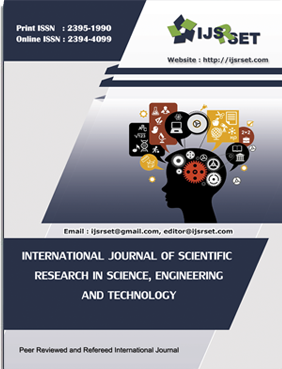The Intersection of Coalition Politics and Political Turmoil : The Impact of the PDP-BJP Alliance on Jammu and Kashmir
Keywords:
Ideological, Communal Divides, Incompatibility, Insurgency, Autonomy, CoalitionAbstract
This study explores the intricate dynamics of coalition politics in Jammu and Kashmir, focusing specifically on the alliance between the People's Democratic Party (PDP) and the Bharatiya Janata Party (BJP), and its profound impact on the region's political landscape. The PDP-BJP coalition, formed in 2015 after the Jammu and Kashmir Legislative Assembly elections, was a strategic but controversial partnership, bringing together two ideologically divergent parties. This alliance was intended to bridge the regional and communal divides between the Kashmir Valley, dominated by the PDP, and the Jammu region, where the BJP held sway. However, the coalition quickly became a source of significant political turmoil. It delves into the historical and political context that led to the formation of this coalition, analyzing the motivations of both parties and the broader implications for governance in a conflict-ridden state. The study examines how the alliance, initially perceived as a means to ensure political stability and development, instead exacerbated existing tensions and led to widespread public discontent. The ideological incompatibility between the PDP and BJP, particularly on sensitive issues such as Article 370, autonomy, and the handling of insurgency, is highlighted as a key factor that undermined the coalition's effectiveness. Moreover, the research assesses the cascading effects of the alliance on Jammu and Kashmir's political stability, including the erosion of the PDP’s support base, the rise of internal dissent, and the eventual collapse of the coalition in 2018. The abstract also explores the broader consequences of this political turmoil, such as the increased alienation of the Kashmiri population, the resurgence of militancy, and the central government’s subsequent decision to abrogate Article 370, which further destabilized the region. It provides a comprehensive analysis of the PDP-BJP alliance, offering insights into how coalition politics in a deeply divided and conflict-prone region like Jammu and Kashmir can lead to unintended consequences. It underscores the challenges of governance in such a context and the critical importance of aligning political strategies with the region’s unique socio-political realities. Through this exploration, the research contributes to a deeper understanding of the intersection between coalition politics and political turmoil, particularly in the context of Jammu and Kashmir’s complex and volatile political environment.
📊 Article Downloads
References
Aggarwal, R. (2004). Beyond lines of control: Performance and politics on the disputed borders of Ladakh, India. Duke University Press. (pp. 88-105).
Ahmad, A. (1996). Jammu and Kashmir: The legacy of unrest. Vikas Publishing House. (pp. 175-190).
Behera, N. C. (2006). Demystifying Kashmir. Brookings Institution Press. (pp. 221-240).
Bhattacharya, S. (2017). Governing Kashmir: An inside account of the politics and administration in Kashmir. Rupa Publications. (pp. 130-152).
Bose, S. (2011). Dead reckoning: Memories of the 1971 Bangladesh war. Columbia University Press. (pp. 95-114).
Chandhoke, N. (2010). Contested secession: Rights, sovereignty, and self-determination in Jammu and Kashmir. Oxford University Press. (pp. 76-93).
Dasgupta, A. (2016). Kashmir: Politics of identity and separatism. Sage Publications. (pp. 165-182).
Dev, R. (2002). The search for peace in Kashmir. Orient Longman. (pp. 212-230).
Dossani, R., & Rowen, H. S. (2005). Prospects for peace in South Asia. Stanford University Press. (pp. 147-162).
Ghosh, A. (2008). An unfinished revolution: Political change in Jammu and Kashmir, 1931-1947. Routledge. (pp. 56-78).
Kaur, R. (2005). The trajectories of the Indian state: Politics and ideas in contemporary South Asia. Sage Publications. (pp. 101-120).
Khan, A. (2004). The politics of democracy and separatism in Jammu and Kashmir. Concept Publishing Company. (pp. 134-153).
Misra, A. (2007). India-Pakistan: Coming to terms. Palgrave Macmillan. (pp. 90-108).
Pande, A. (2011). Explaining Pakistan’s foreign policy: Escaping India. Routledge. (pp. 198-217).
Raina, B. L. (2002). The Kashmir tangle: Issues and options. UBS Publishers. (pp. 142-158).
Robinson, W. I. (2014). Global capitalism and the crisis of humanity. Cambridge University Press. (pp. 81-99).
Schofield, V. (2002). Kashmir in the crossfire. I.B. Tauris. (pp. 211-229).
Shah, F. (2019). The search for peace in Kashmir. Sage Publications. (pp. 89-106).
Varshney, A. (1991). India and Kashmir: The problem of integration. Cambridge University Press. (pp. 133-150).
Verma, A. (2000). Kashmir: Insurgency and after. Rupa Publications. (pp. 175-191).
Downloads
Published
Issue
Section
License
Copyright (c) 2024 International Journal of Scientific Research in Science, Engineering and Technology

This work is licensed under a Creative Commons Attribution 4.0 International License.




